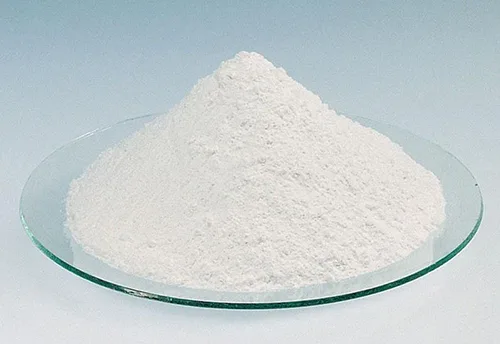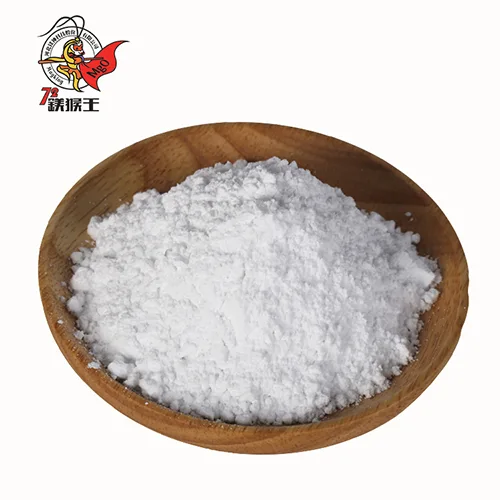Reactive magnesium oxide (MgO) is a specialized form of magnesium oxide distinguished by its high chemical reactivity. Unlike ordinary MgO, which is categorized into light and heavy types based on density, active MgO is characterized by a higher surface area, finer particle size, and increased surface defects. These properties enhance its effectiveness in various applications across multiple industries, including chemical engineering, environmental protection, materials science, medicine, and food.
This blog explores the characteristics of active magnesium oxide and its wide-ranging applications, providing insights into how its unique properties make it indispensable in different fields.
Reactive Magnesium Oxide Characteristics
Active magnesium oxide stands out from conventional MgO due to its:
- High Specific Surface Area: A larger surface area allows for greater interaction with reactants, making it useful in catalytic applications.
- Fine Particle Size: Smaller particles contribute to better dispersion and reactivity.
- Increased Surface Defects: These defects enhance chemical activity and adsorption capabilities.
- Enhanced Reactivity: Active MgO readily participates in reactions, making it superior for applications requiring rapid chemical transformations.
Its reactivity makes it suitable for specialized uses, such as catalysts, environmental treatments, and advanced material formulations.
Application of Reactive Magnesium Oxide
Chemical Engineering and Catalysis
Catalyst Carrier
Active MgO is widely used as a catalyst carrier due to its high porosity and chemical stability. It provides a robust support structure for catalytic metals, enhancing their efficiency in chemical reactions such as hydrogenation and dehydrogenation.
Organic Reaction Catalyst
Its strong base properties make it an effective catalyst in organic synthesis, particularly in condensation reactions, esterifications, and transesterifications. This enhances yield and reaction efficiency in fine chemical production.
Chloroprene Rubber Vulcanizer
Active MgO plays a crucial role in the vulcanization of chloroprene rubber by acting as an acid acceptor. It stabilizes rubber properties, improving heat resistance, mechanical strength, and aging durability in industrial rubber applications.
Environmental Protection Field
Acidic Wastewater Treatment
Due to its strong alkaline nature, active MgO neutralizes acidic wastewater efficiently. It is used in industries where acidic effluents pose environmental hazards, ensuring compliance with wastewater disposal regulations.
Heavy Metal Adsorption
Active MgO has excellent adsorption properties, making it effective in removing heavy metals like lead, cadmium, and arsenic from industrial wastewater. Its high surface area enhances adsorption capacity, reducing environmental contamination.
Flue Gas Desulfurization
In power plants and industrial processes, active MgO is used to remove sulfur dioxide (SO2) from flue gases. This helps in reducing air pollution and meeting environmental standards.
Materials Science
High-Performance Ceramics
The inclusion of active MgO in ceramics enhances sintering properties, mechanical strength, and thermal resistance. It is particularly beneficial in the production of advanced ceramics used in electronics and aerospace industries.
Flame Retardant Materials
Active MgO is incorporated into flame retardant formulations to improve fire resistance in building materials, textiles, and plastics. Its synergistic effect with other flame retardants enhances overall performance.
Thermal Conductive Materials
Due to its high thermal stability and conductivity, active MgO is used in thermal interface materials for electronics, ensuring efficient heat dissipation in high-performance devices.
Medicine and Food
Antacids
Active MgO is a key ingredient in antacids, providing fast and effective relief from acid reflux and indigestion by neutralizing stomach acid.
Food Additives
In the food industry, active MgO is used as a pH regulator, anti-caking agent, and nutrient supplement, improving food texture and stability.
Other Applications
Special Cement
Active MgO is used in special cement formulations to improve setting time, durability, and resistance to sulfate attacks, making it ideal for construction in harsh environments.
Ink Thickener
Its high surface area and reactivity make active MgO an excellent thickening agent in ink formulations, enhancing print quality and viscosity control.
Conclusion
Active magnesium oxide, with its high reactivity and unique properties, serves as a crucial material across various industries. From catalysis and environmental protection to advanced materials and pharmaceuticals, its superior performance makes it a valuable component in modern industrial applications. As research continues, the potential of active MgO is expected to expand further, unlocking new possibilities in technological and scientific advancements.
FAQs
How is active magnesium oxide different from ordinary magnesium oxide?
Active MgO has a higher specific surface area, finer particle size, and greater chemical reactivity, making it suitable for specialized applications such as catalysis and adsorption.
What industries benefit the most from active magnesium oxide?
Industries such as chemical engineering, environmental protection, materials science, medicine, and food processing benefit significantly from active MgO due to its versatile properties.
Can active magnesium oxide be used in agriculture?
Yes, active MgO can be used as a soil amendment to regulate pH levels and enhance nutrient availability, promoting better crop growth and yield.



